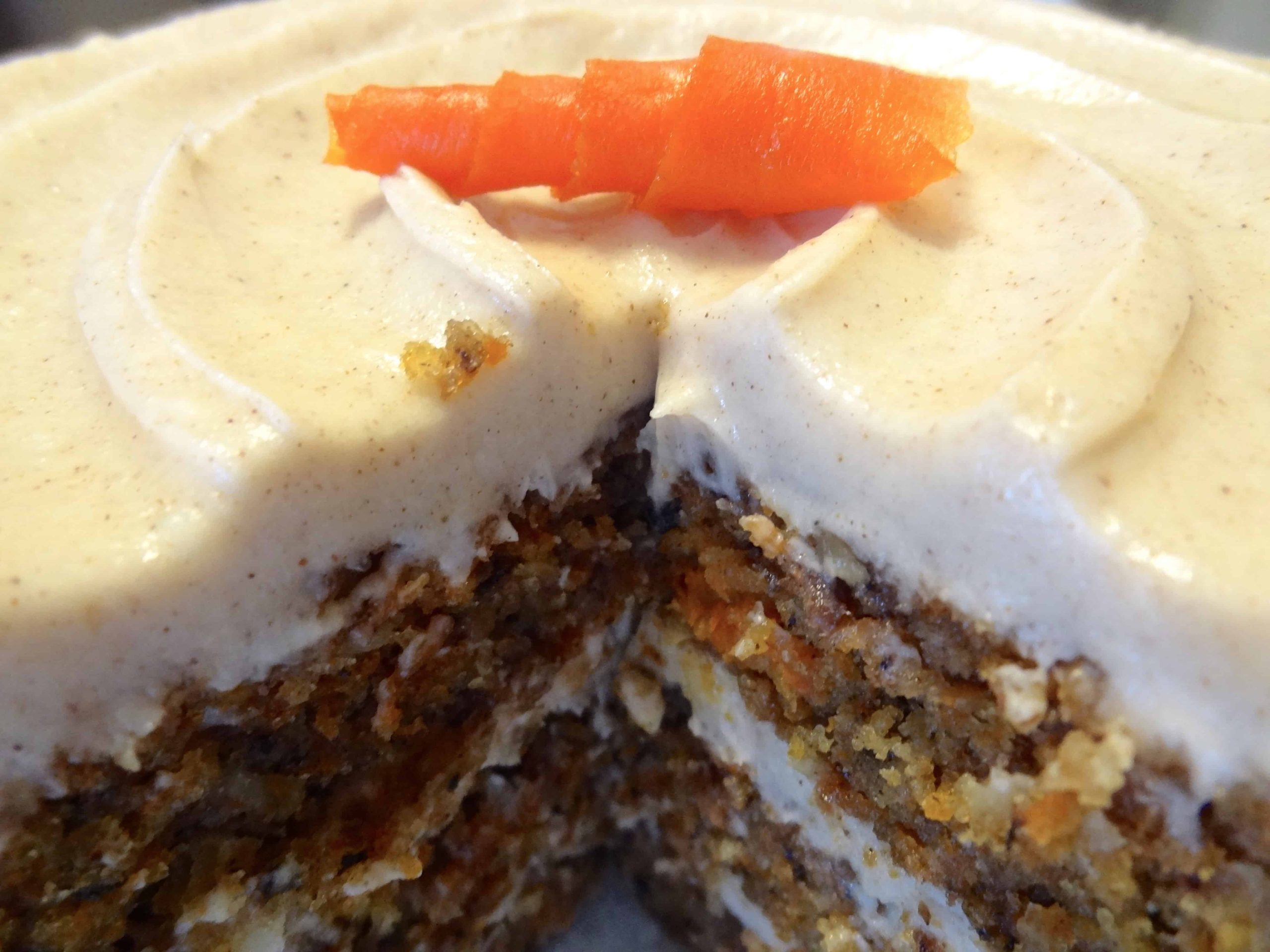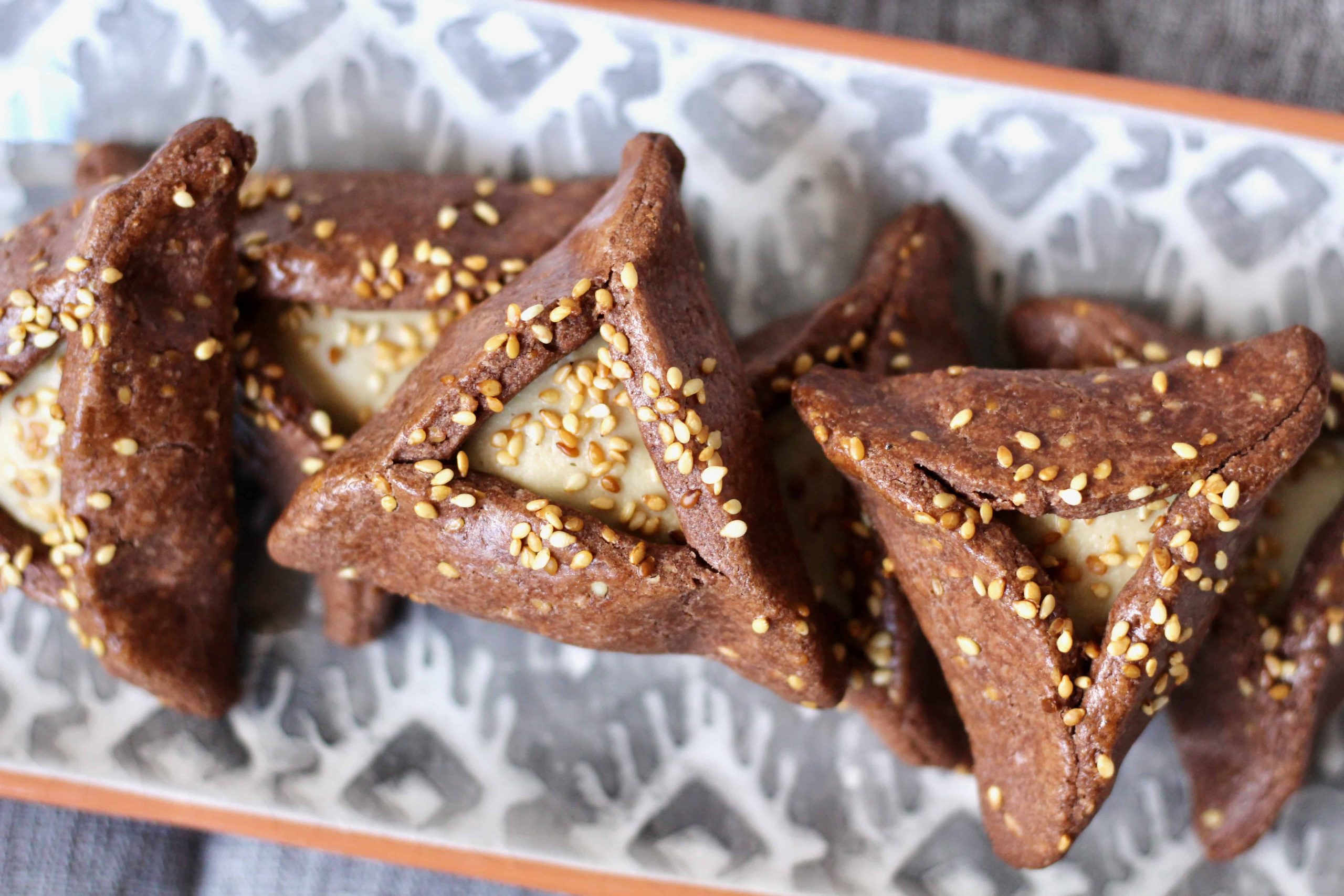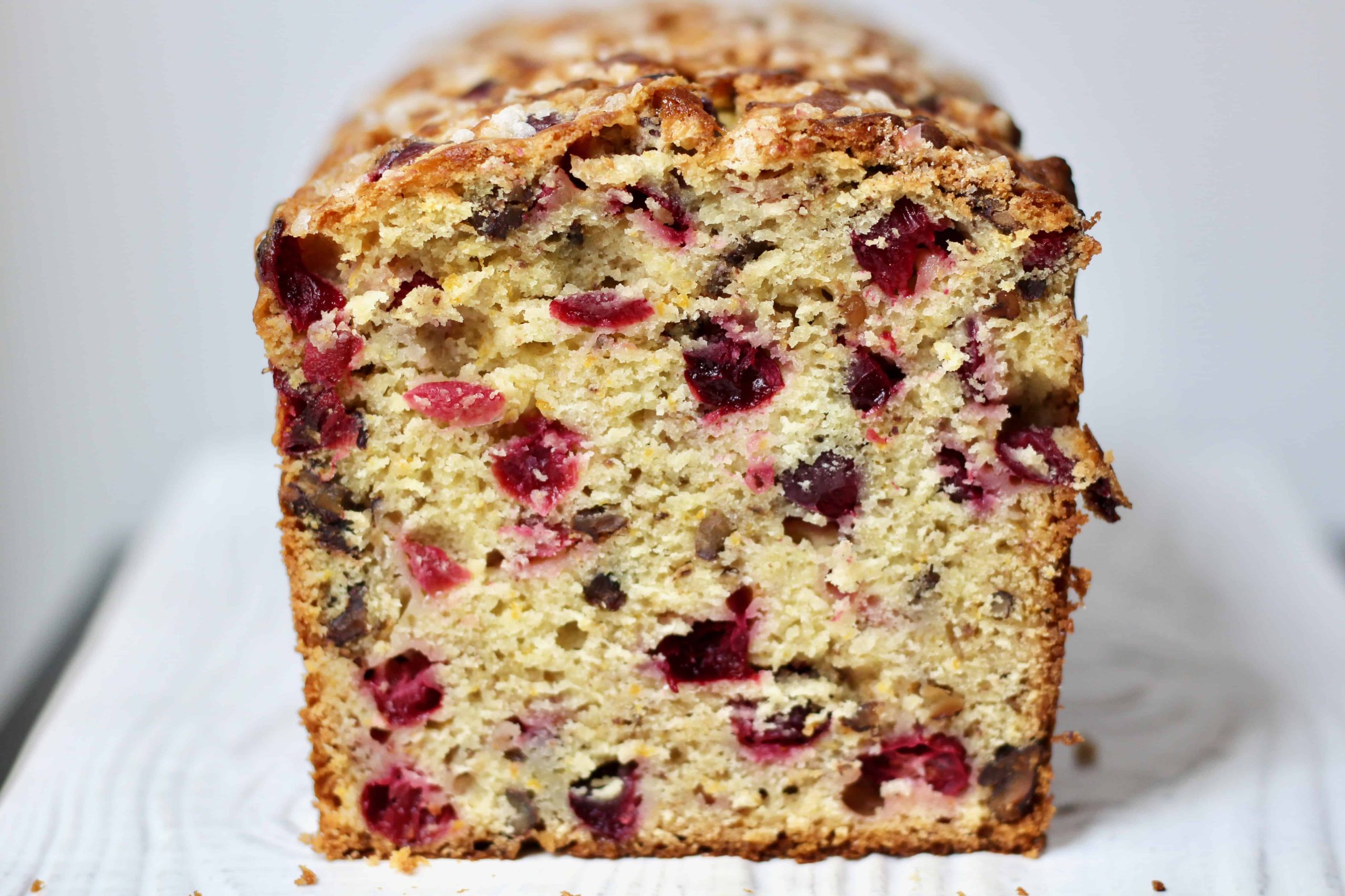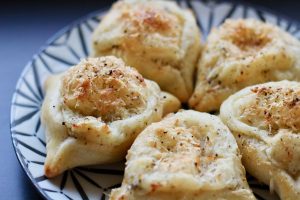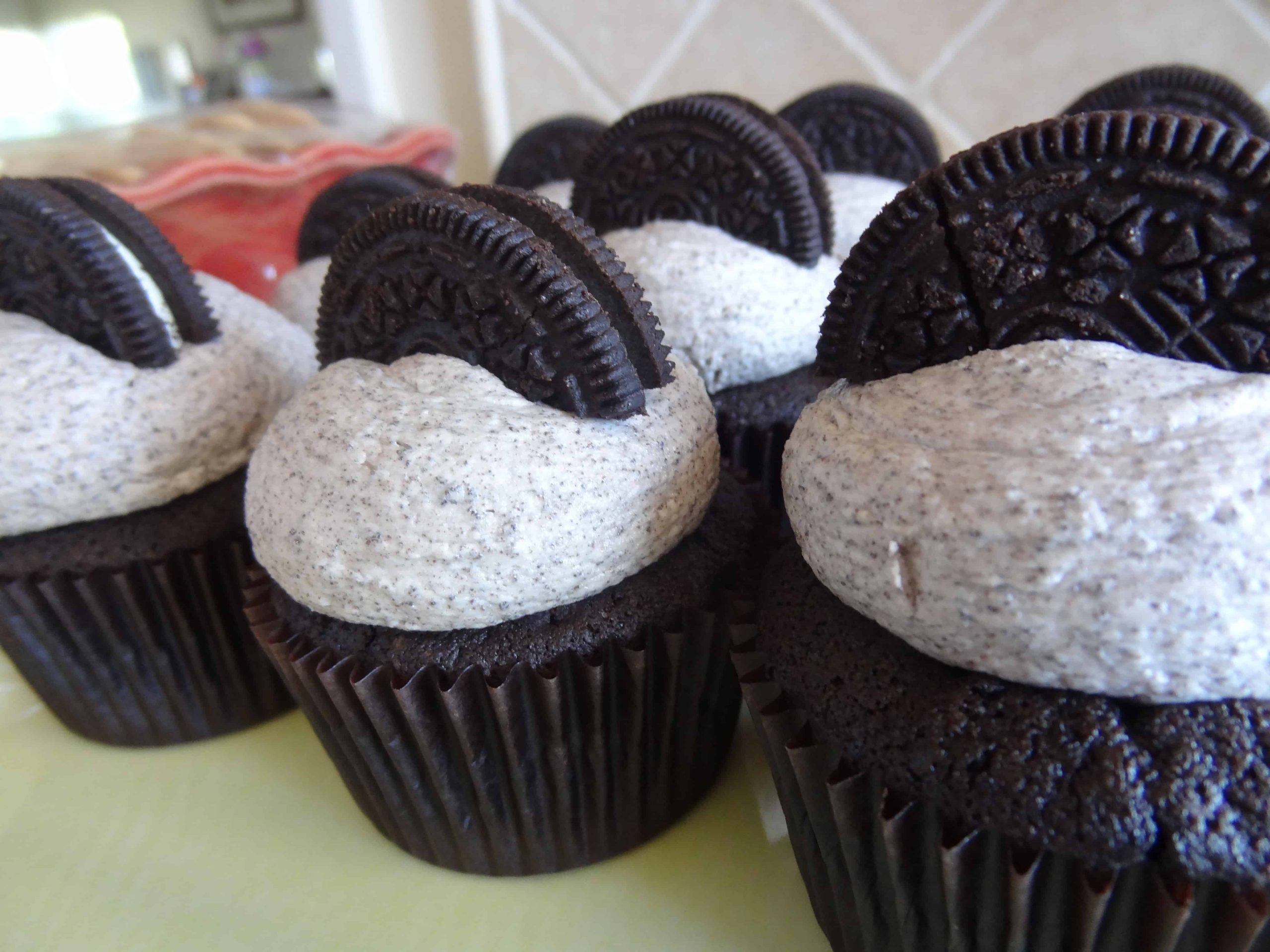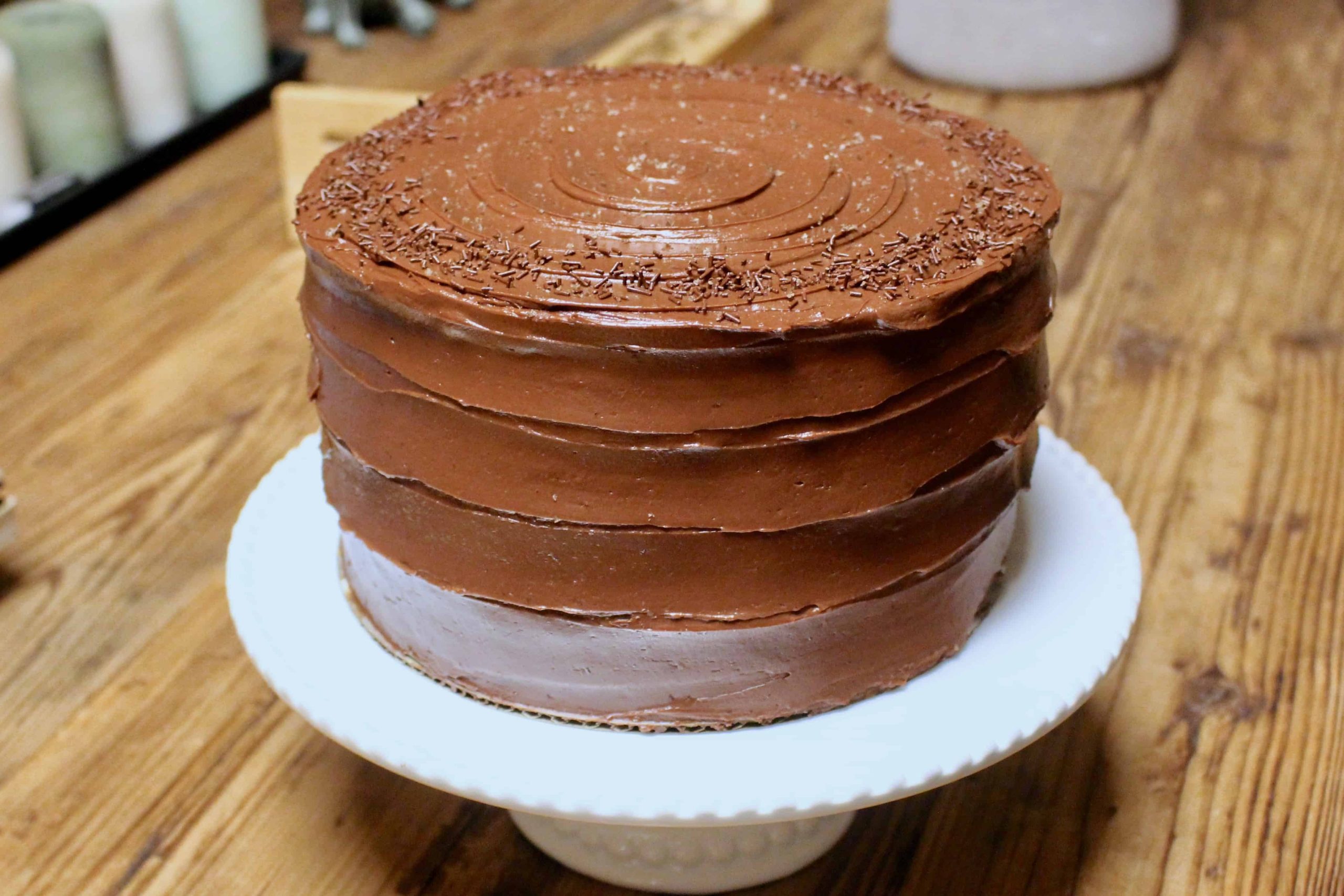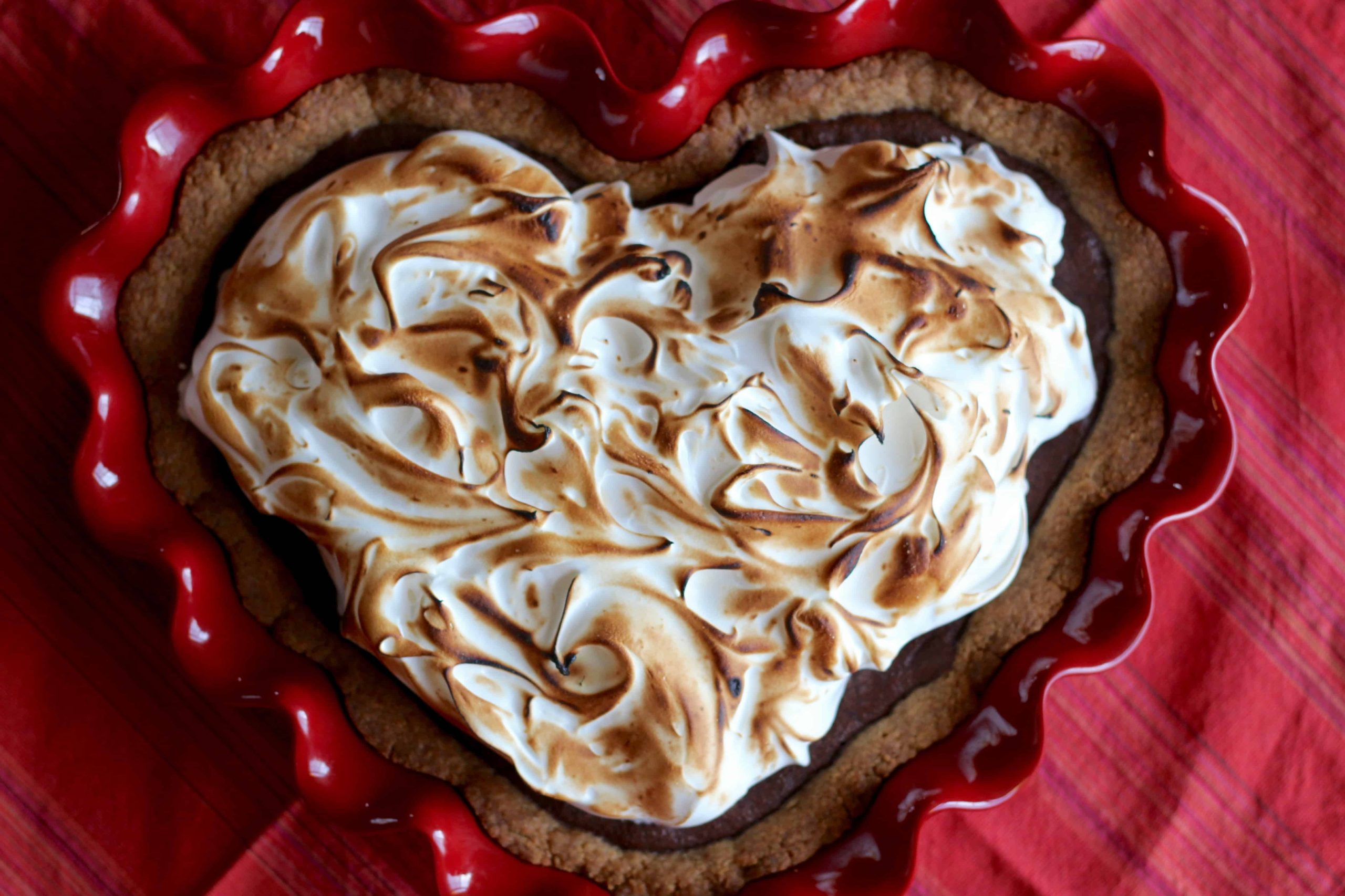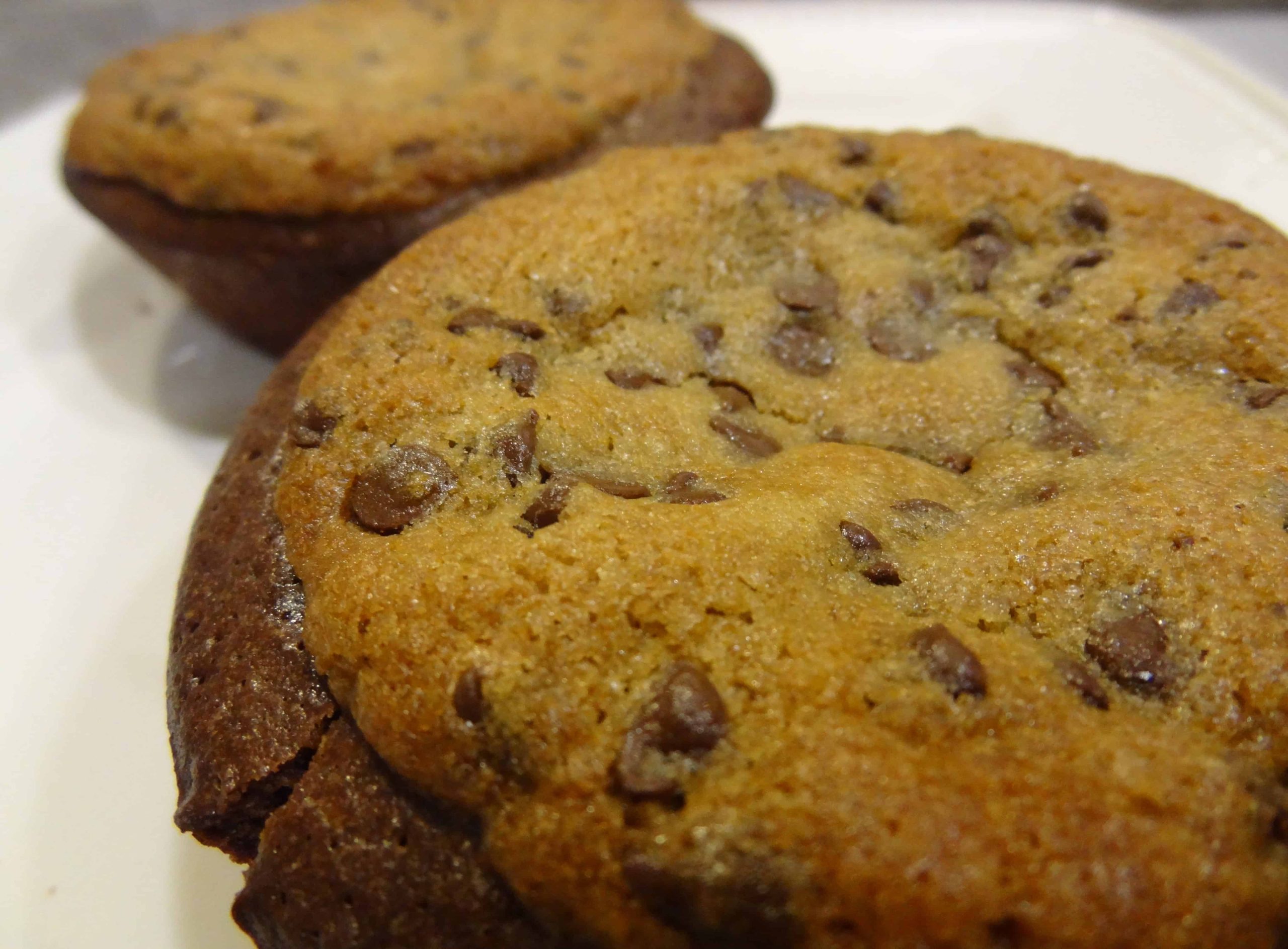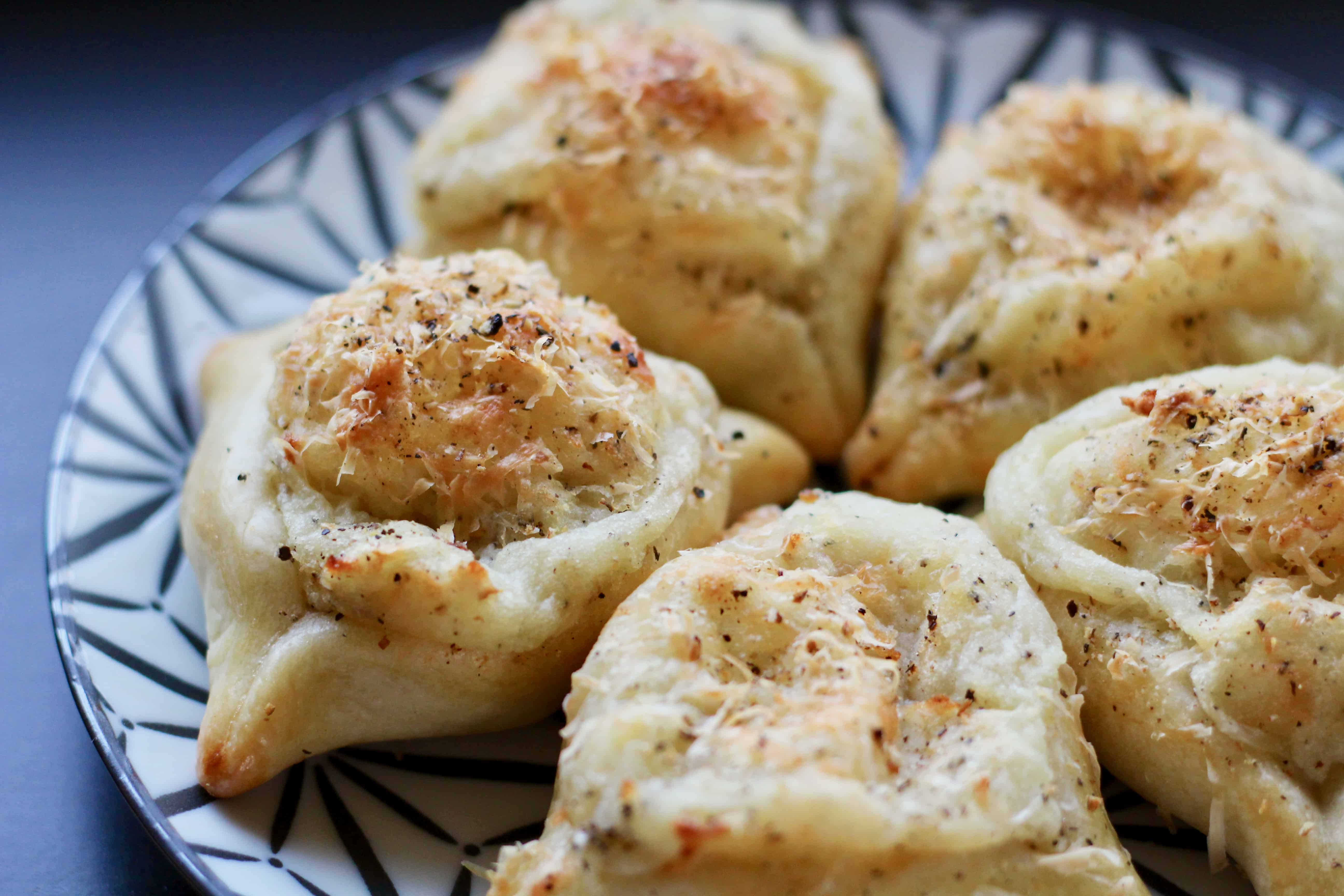
I know Purim is technically over. But my friends in Israel said that everyone is still celebrating through Saturday, so I decided that I’m going to keep blogging about hamantashen until it’s no longer socially acceptable. Except this post is a little different. I’ve always thought savory hamantashen would be super interesting, but it wasn’t something I’d actually looked into making yet, until Molly Yeh had to go and make knishentashen last year. That’s right, I’m talking about a mash-up (pun intended) of potato knishes and hamantashen, two very beloved Jewish foods that one wouldn’t necessarily think of together, and yet the crossover works amazing well. I mean, Molly is kind of a creative genius, and I think this concept is one of her best ideas ever. For those not familiar with knishes, they consist of a savory dough often filled with potato (either mashed or small chunks) and onion, or possibly mushrooms or meat. As a verifiable onion hater, I knew I’d have to tweak Molly’s Salt & Vinegar version a bit to my liking. Although hers did include cheese, so it wasn’t a huge stretch for my mind to waft to one of my all-time favorite cheese applications, cacio e pepe. If you’ve never had this, get thyself to the nearest authentic Italian restaurant ASAP– cacio e pepe is a classic Roman pasta dish, in which the sauce is a heavenly emulsion of pecorino cheese, black pepper, and a little pasta cooking water. That’s it– so simple, yet rich and very flavorful. “Alfredo” sauce is not a thing in Italy; it was invented here, and it’s probably a bastardized version of cacio e pepe. I almost want to call it an Italian cream sauce or mac and cheese, but it’s really not. Anyway, I highly recommend seeking it out in pasta form (or making it at home), regardless of whether you make these Cacio e Pepe Knishentashen!
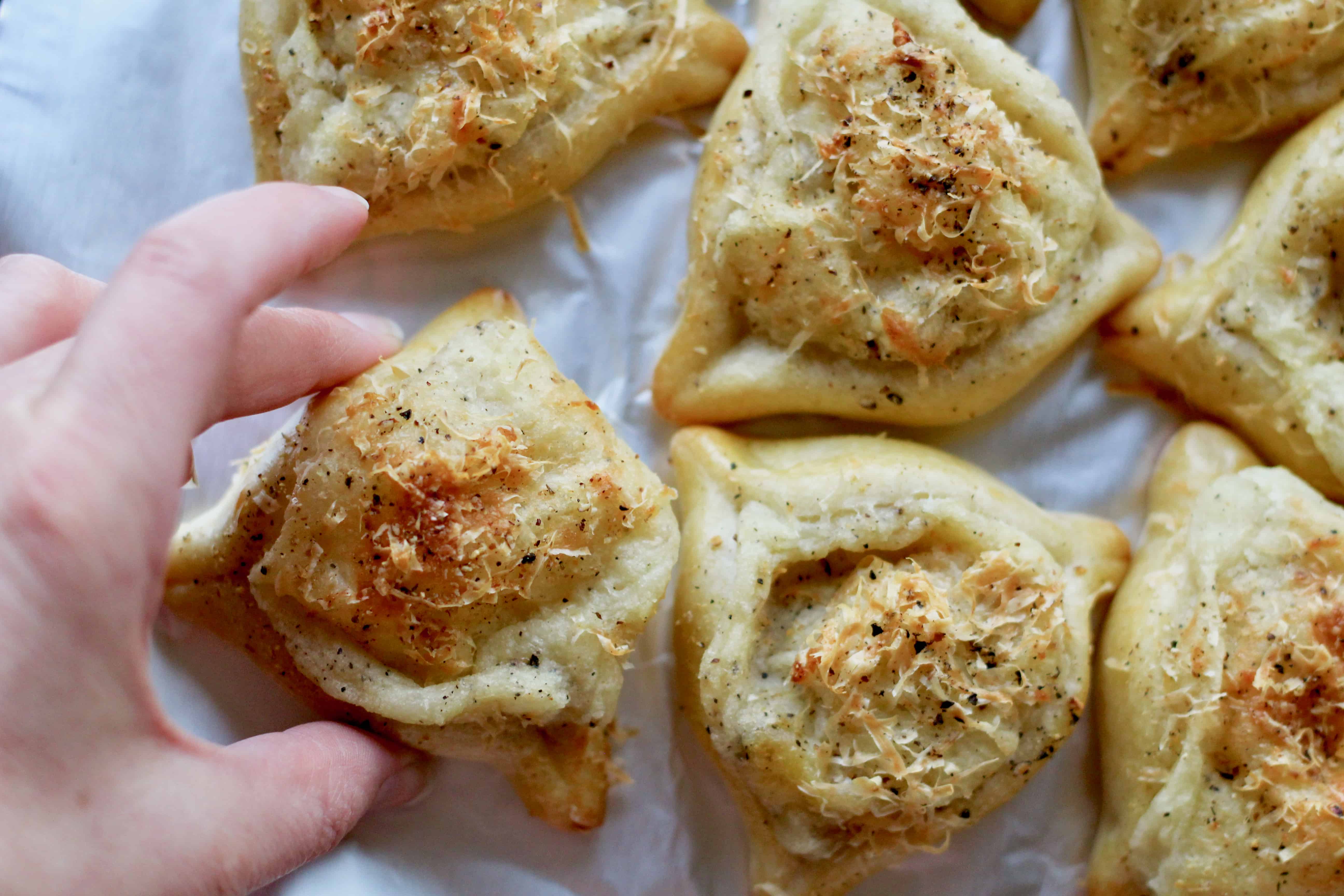
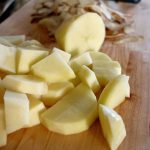
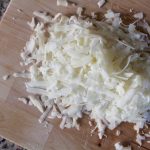
But I digress. So I decided to add copious amounts of cheese and pepper to my potato knish filling, and it worked out swimmingly. After making an easy olive oil-based dough and boiling the potatoes, you assemble the savory hamantashen similarly to how you’d make the sweet ones, except that a) you don’t have to precisely roll out and cut the dough, b) these are bigger, and c) you leave them much more open on top. They are fun to watch in the oven because they start to puff up around 20 minutes in and breach the edges of the dough a bit, then they deflate a little as they cool down. Every single one was different and so cool-looking! I liked how they’re all irregular and imperfect. And let’s not forget delicious— they are soft and pillowy, with a pleasingly sharp saltiness from the cheese, a peppery kick, and a burnished, crunchy cheese lid on top.
There are a lot of things being cacio-e-pepe‘d out there at the moment, and while I don’t think hamantashen ever intended to be this way, but I’m not going back any time soon!
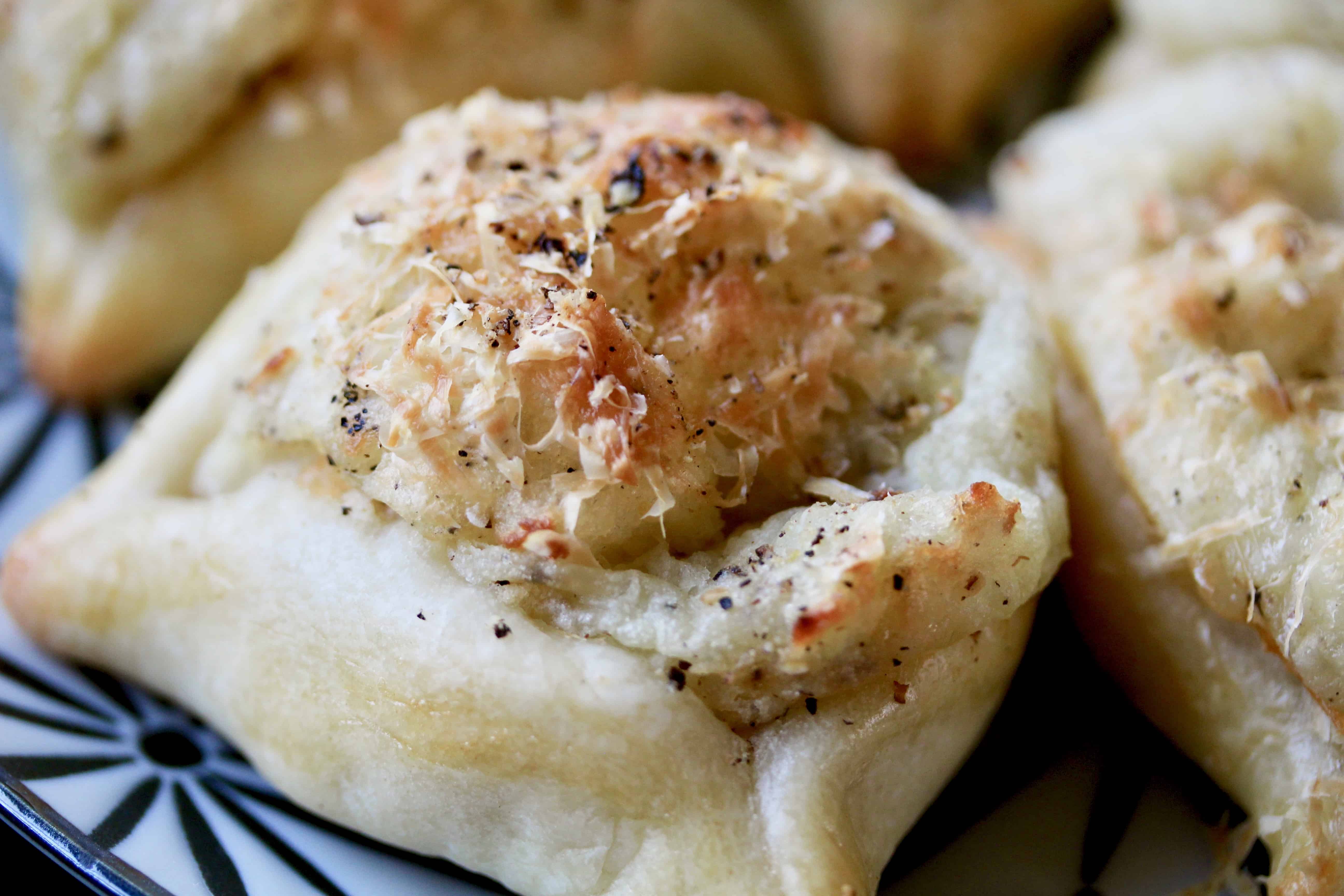
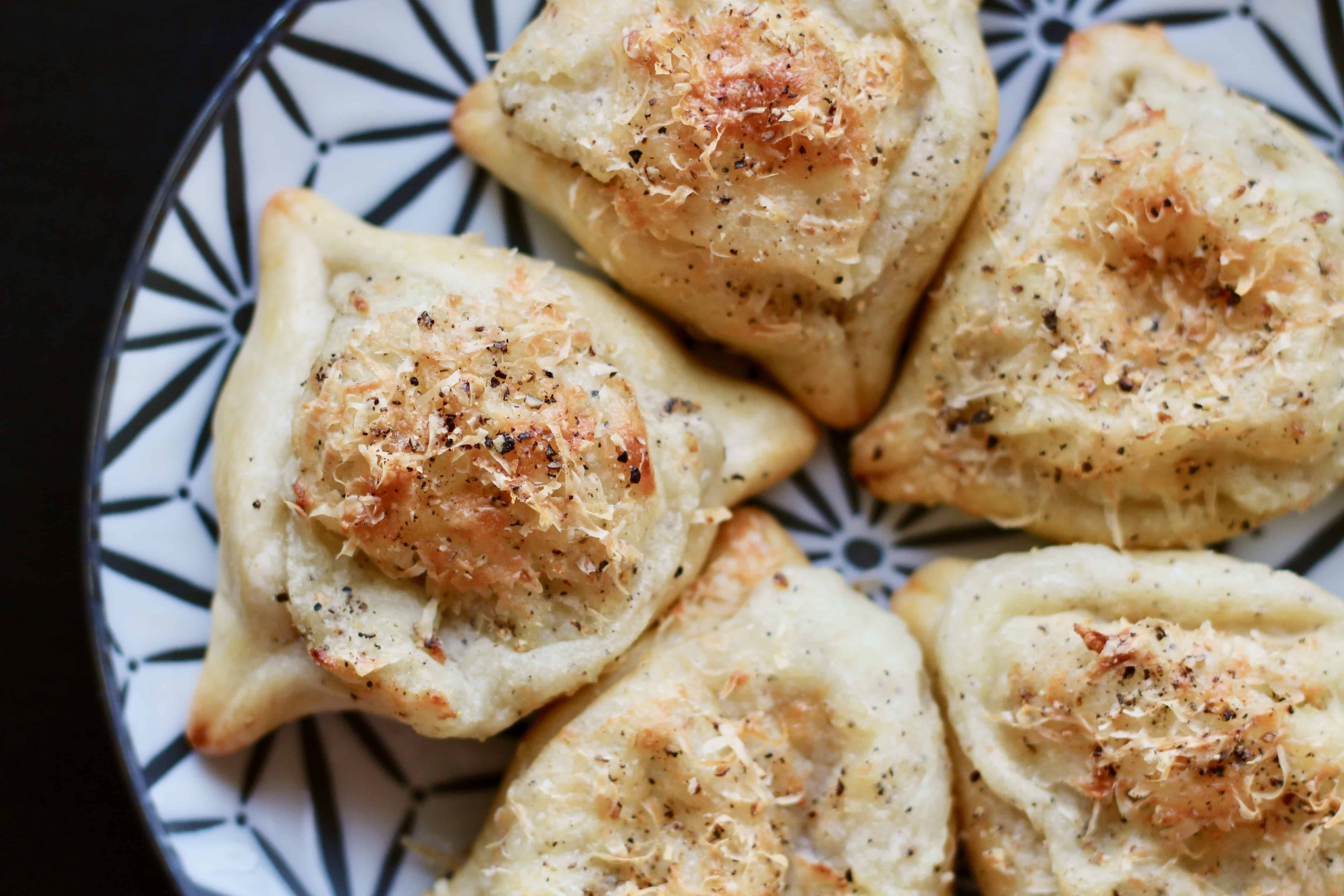
Cacio e Pepe Knishentashen
Adapted from My Name is Yeh
Yields 12 pastries
For the dough:
- 1 ¾ cups + 2 tablespoons (225g) all-purpose flour, plus more for dusting
- 2 teaspoons granulated sugar
- 1 teaspoon kosher salt
- ¼ cup (50g) extra-virgin olive oil
- ½ cup (118g) water
For the filling:
- 1½ pounds (680g) russet potatoes, peeled and cut into small cubes
- 1 tablespoon kosher salt
- 1 tablespoon unsalted butter
- 1 tablespoon extra-virgin olive oil
- 2 teaspoons freshly ground black pepper, or to taste, plus more for garnish
- 1⅓ cups (150g) coarsely shredded Pecorino Romano cheese
- 1 large egg, lightly beaten
- ¼ cup (25g) finely shredded Pecorino Romano cheese
Preheat an oven to 400°F. Line two rimmed half-sheet pans with parchment paper and set them aside.
To make the dough:
Whisk the flour, sugar, and salt together in a large bowl. Stream in the oil and water and stir with a wooden spoon until the dough starts to come together in a shaggy mass. Transfer it to a lightly-floured work surface and knead for 5-7 minutes, dusting with flour as needed, until the dough has become smooth and slightly tacky, yet with a silky texture; form it into a ball. Leave the dough on the work surface and cover it with plastic wrap or a kitchen towel, letting it rest at room temperature during preparation of the filling.
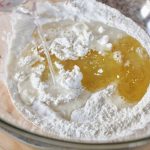
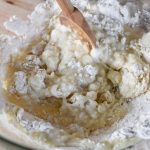
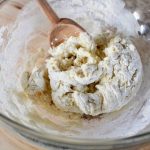
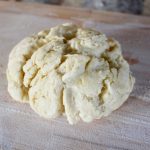
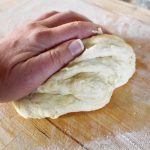
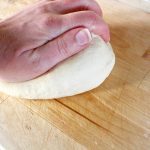
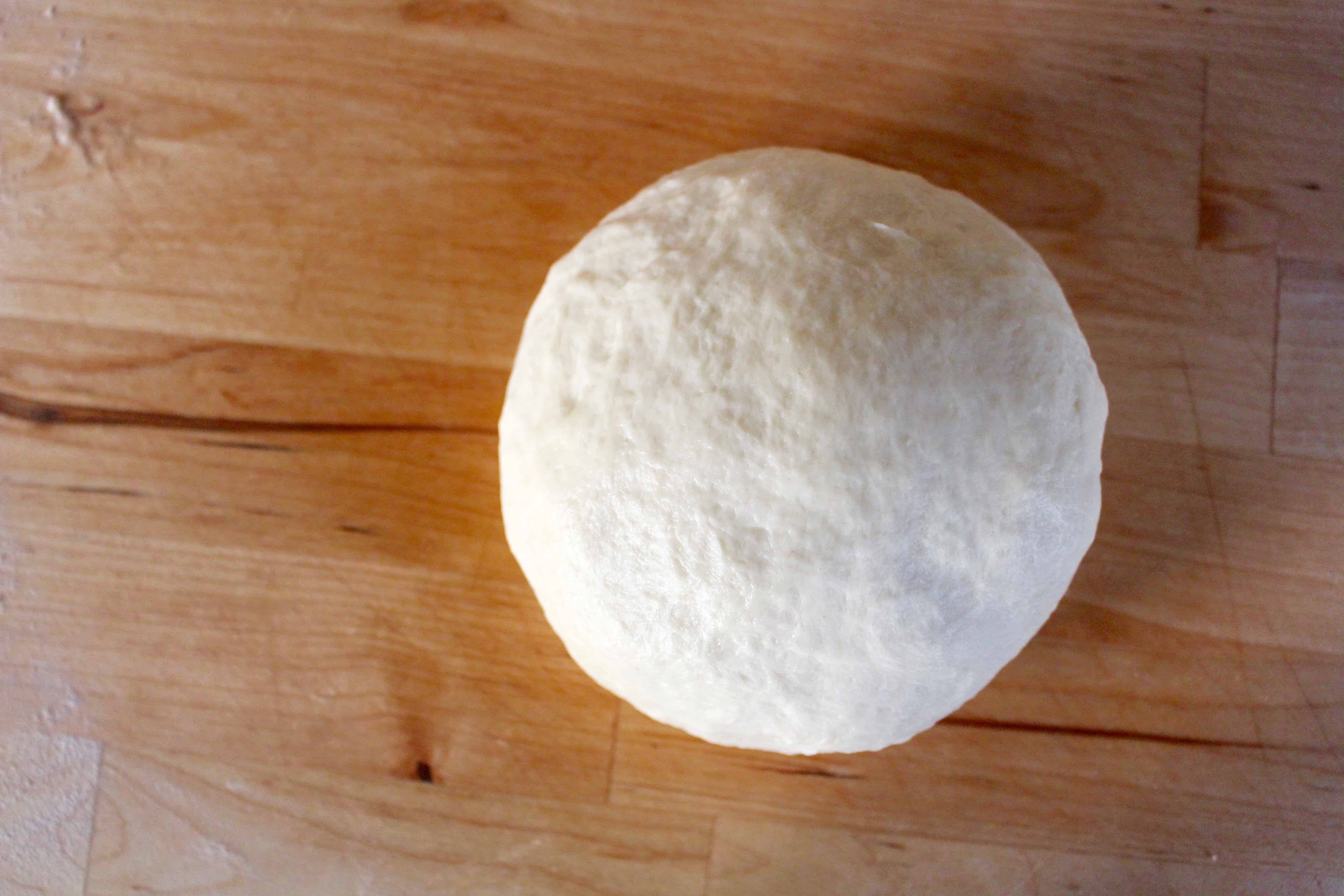
To make the filling:
Place the cubed potatoes with 1 tablespoon kosher salt in a medium pot of water and set it to boil. (The water should cover the potatoes by 1″.) Cook for an additional 15 minutes or so, or until the potatoes are very tender. Drain them into a colander and let them sit for a few minutes until most of the water is gone. Transfer the potatoes back to the pot and add the butter, olive oil, larger quantity of Pecorino Romano cheese, and black pepper to the pot and mash all the ingredients together until mostly smooth. Set aside the filling to cool while you work with the dough.
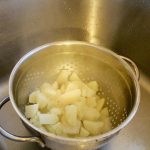
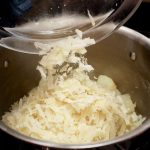
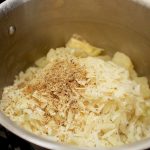
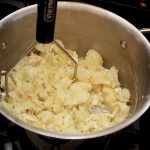
To assemble the knishentashen:
Re-flour the dough work surface and divide the dough into 12 equal pieces with a bench scraper or sharp knife. Roll each piece into a ball, then roll out or flatten each ball into a 4″ circle; brush the dough rounds with a thin layer of eggwash. Scoop about 1½ tablespoons of the cheesy potato filling onto the center of each piece of dough; I find that a spring-loaded ice cream scoop works great for even, well-shaped scoops.
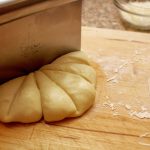
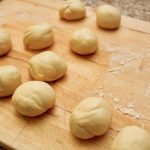
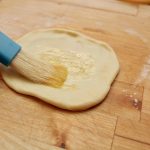

Carefully fold the edges up and around the filling and firmly pinch the dough together at three points to form a triangle. Transfer 6 pastries to each of the prepared sheet pans, spacing them a few inches apart. Brush the outsides with eggwash and sprinkle each triangle with some of the finely shredded cheese, plus a little more black pepper on top to finish.
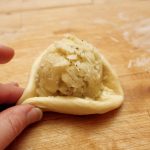

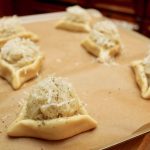

Bake one tray at a time until the cheesy tops are thoroughly golden and the edges of the pastry dough are crisped; begin checking for doneness at 20 minutes (mine cooked for 23), rotating the pan halfway through. They will puff up towards the end of baking and sink down once they leave the oven.
Set the pans on wire racks to cool a bit, but do enjoy these warm! Leftover knishentashen can be stored in the fridge for a few days in an airtight container and reheated in the oven. (My countertop toaster oven reheated these beautifully at 350°F for about 10 minutes.) They also freeze quite well, for at least several weeks.
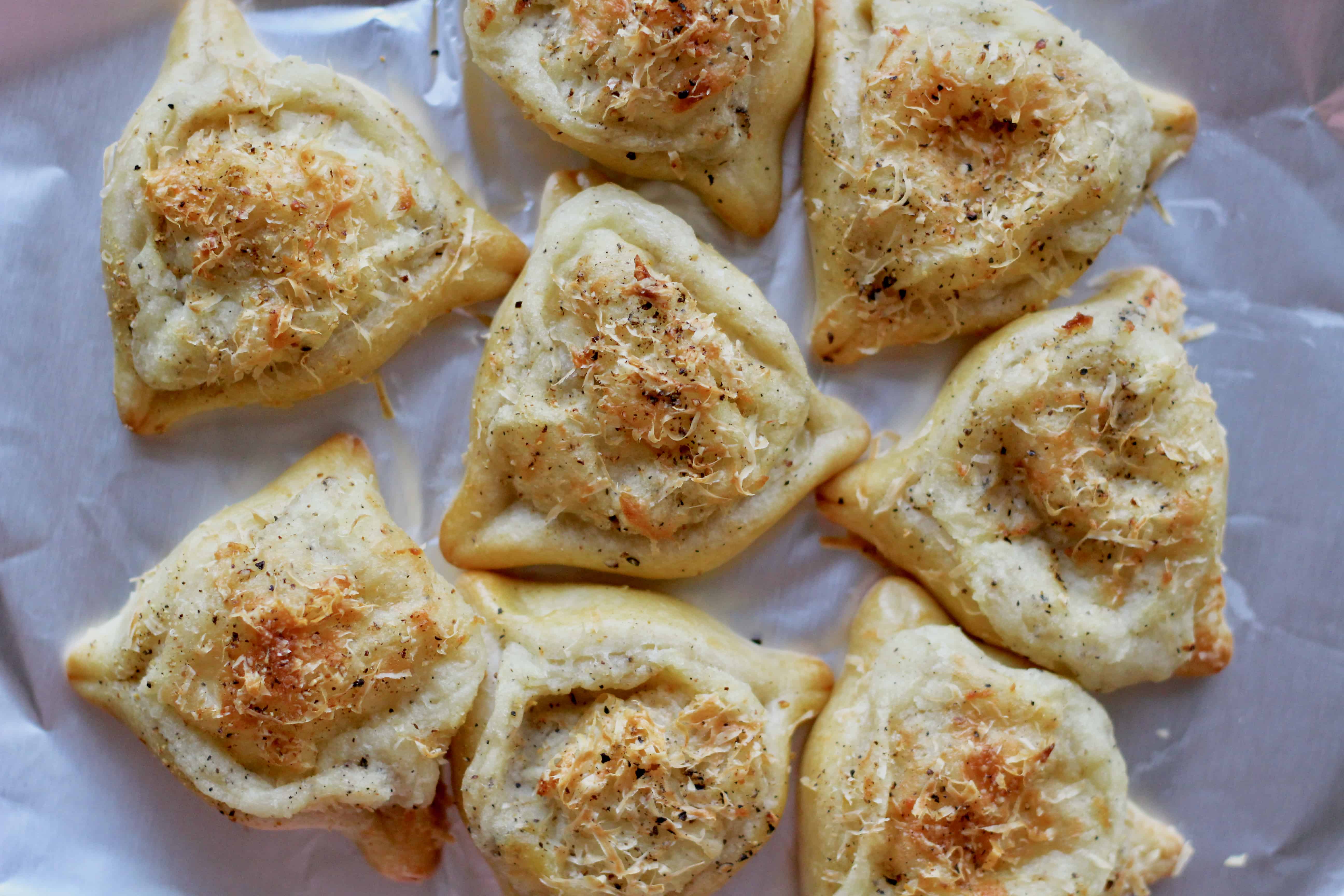
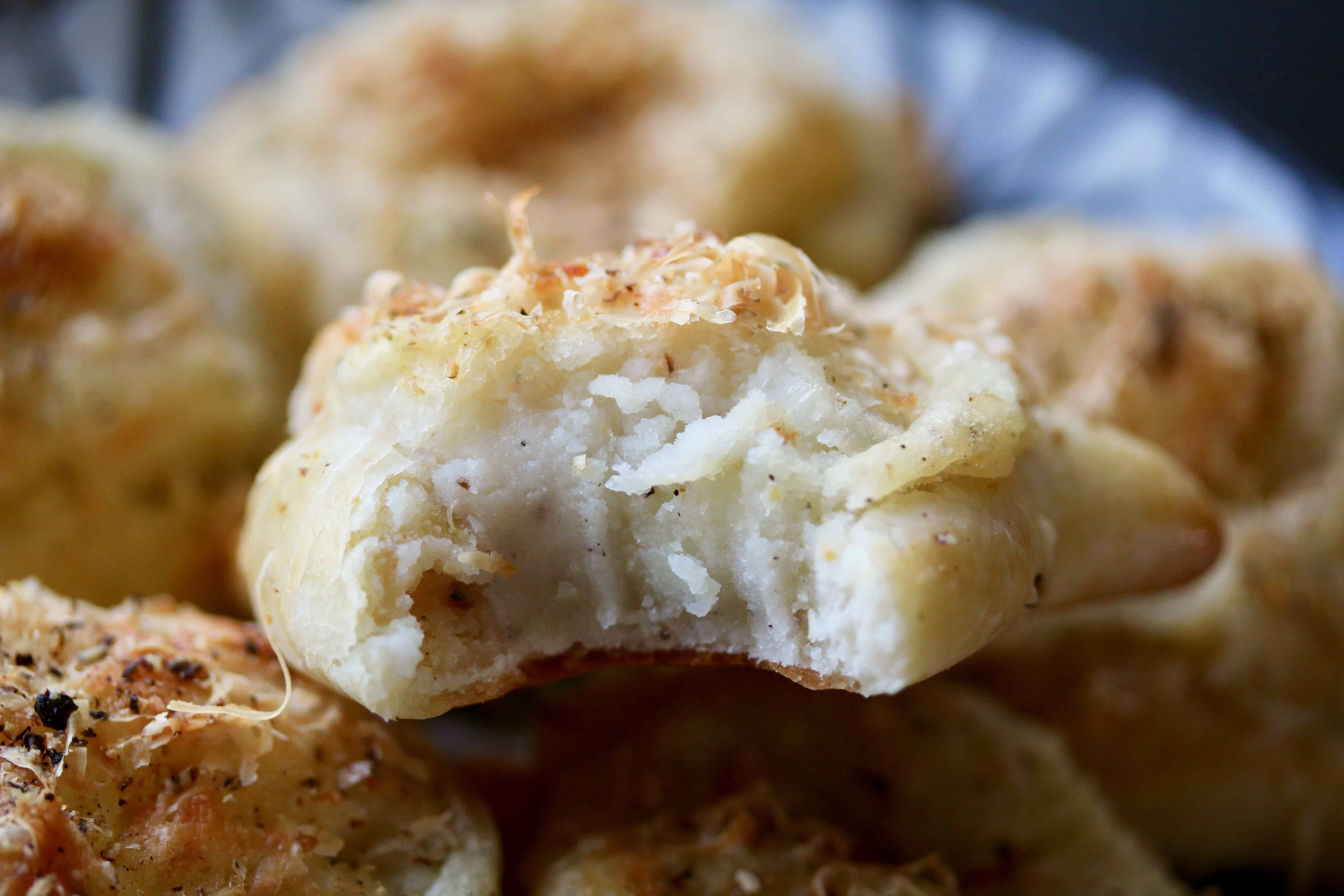
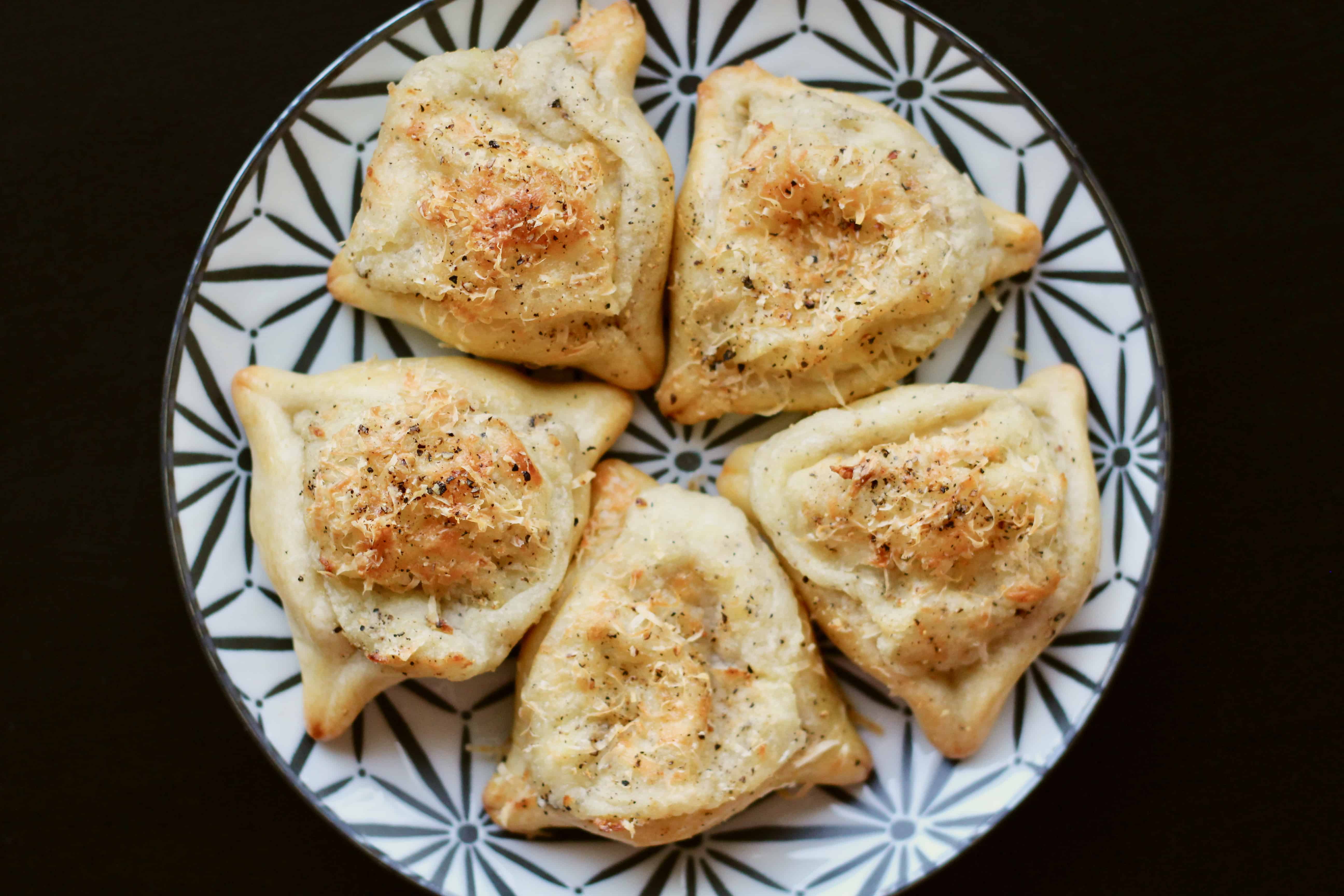
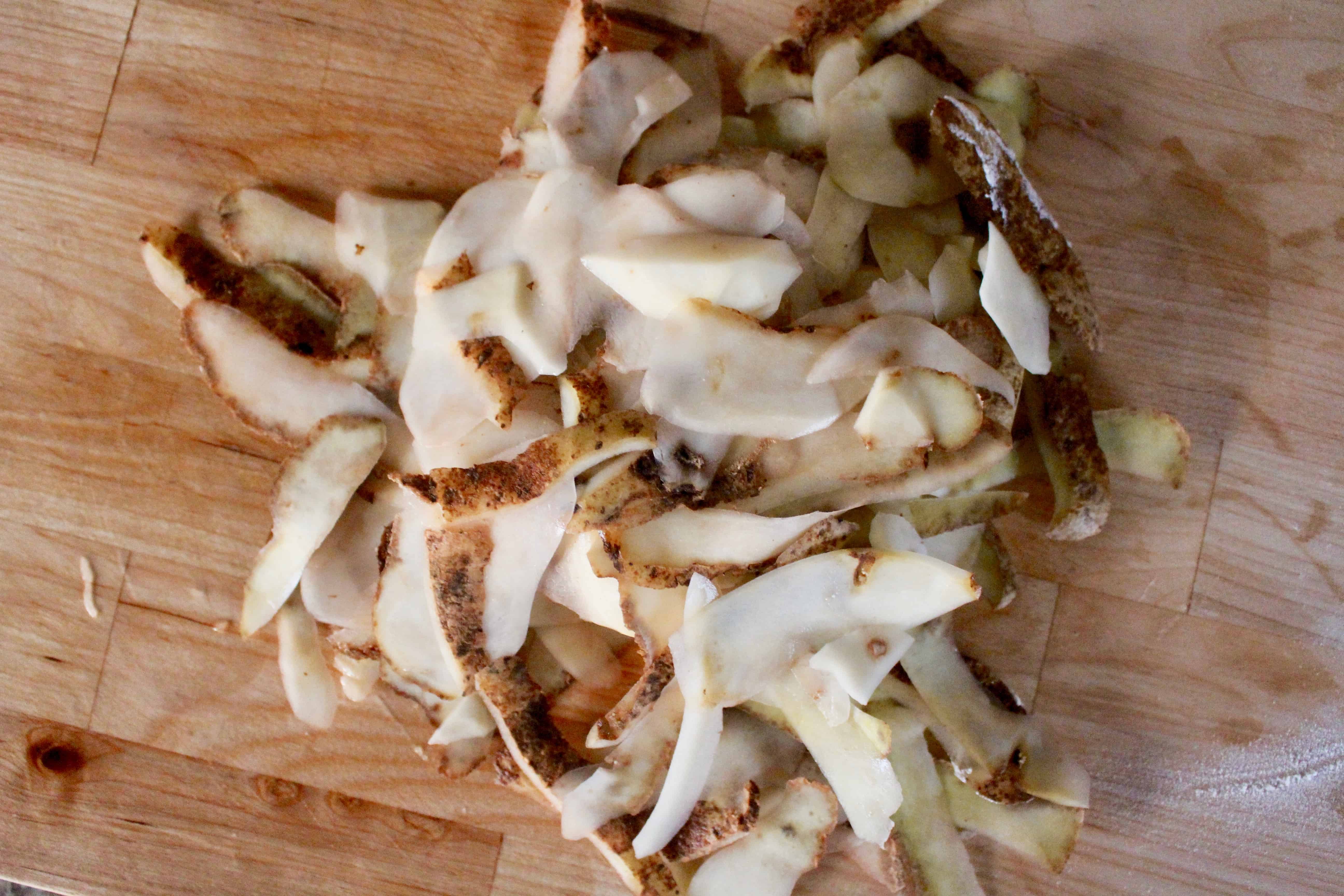
© Dafna Adler & Stellina Sweets, 2019.




